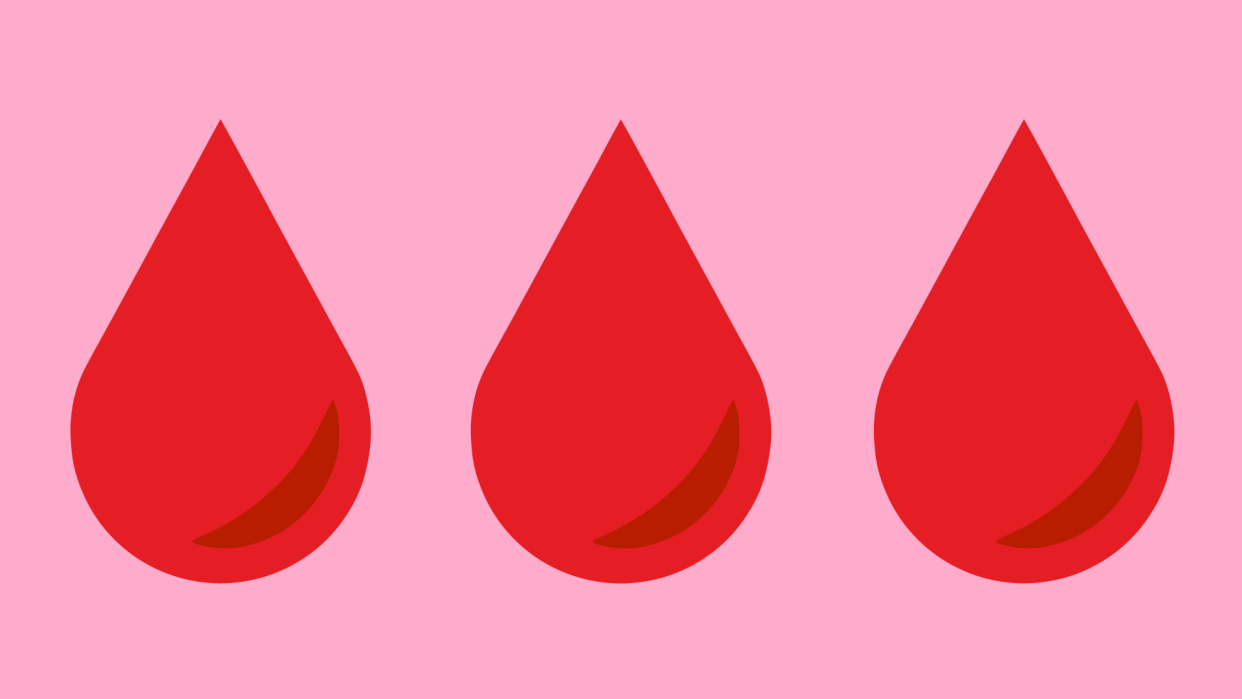New period emoji could help 'end taboo' around menstruation, advocates say

Visits from “Aunt Flow” during “that time of month” are officially over — along with all the other euphemisms that people use to secretly talk about their menstrual cycle.
The long-awaited period “drop of blood” emoji is finally available on iPhone keyboards in “a real breakthrough” in fighting the stigma around menstruation — and advocates say it’s about time we got this bloody conversation started.
As a part of Apple’s iOS 13.2 update, the tech giant released a set of 350 brand-new emojis including mixed-race couples, gender-neutral individuals, people with disabilities and more in a push to be more inclusive.
Plan International UK, a charity that advocates for girl’s rights, started a campaign in 2017 to include menstruation in the emoji lexicon to help girls, women and other menstruators “talk more freely about their periods,” Plan International UK’s Chief Executive, Rose Caldwell, says in a statement.
"We're addressing the need to normalise periods by calling for an #periodemoji" our CEO @TanyaBarronPlan. Vote here https://t.co/afgvexZmdw pic.twitter.com/hJ8qwXoIVk
— PlanInternational UK (@PlanUK) May 30, 2017
Plan International UK’s 2017 online petition garnered nearly 55,000 signatures, with a majority of supporters voting for the underwear symbol with blood-drops, NPR reported. However, the Unicode Consortium, the organization that decides what symbols become emojis, rejected the initial design. They later approved a proposed “drop of blood” symbol earlier this year to represent menstruation, blood donations and medicine.
While the inclusion of a menstruation symbol is a huge step towards “menstrual equity,” or equal access to medically necessary period products, Caldwell and other period advocates say that the fight is far from over.
“This is only one part of the solution,” writes Caldwell. “Period poverty will not stop until we fix the toxic trio of affordability of products, lack of education and period shame.”
In the U.S. alone, one in five girls are absent from school because they can’t afford period products, according to a survey by Always — but, that number doubles abroad. UNESCO estimates that one in ten girls in Sub-Saharan Africa miss school during their menstrual cycle.
One reason for the high costs of period products like tampons and sanitary pads stems from how they’re sold. In 2014, 40 states in the U.S. had a sales tax on period products, considering them a “luxury” item instead of an “essential good.”
Beyond that, homeless and incarcerated menstruators often have extremely limited access to these medically necessary items. Period advocate Nadya Okamoto’s activism began after she witnessed homeless menstruators resorting to anything from toilet paper, socks, brown paper bags, cardboard, cotton balls and more to take care of their menstrual cycle. Since then, the 21-year-old has been on a mission to end what she calls “period poverty.”
Video: Nadya Okamoto on Taxation of Period Products
Meanwhile, reports have revealed that period products are sometimes only available to purchase at the jail commissary for exorbitant prices — otherwise, they are even sometimes used as “bargaining chips.”
But advocates are fighting to ensure that all menstruators have equal access to period products — and they say it all begins with simply talking about “that time of the month.”
“[Conversations about periods have] been wholly absent from our public and political discourse,” Jennifer Weiss-Wolf, who serves as the vice president for development at the NYU Brennan Center for Justice, tells Yahoo Lifestyle.
“We have a whole coded vocabulary around periods – from ‘that time of the month’ to 5,000 [plus] other euphemisms around the world.” Jennifer Weiss-Wolf tells Yahoo Lifestyle. “[They are] often used to maintain secrecy, and therefore, the shame that surrounds menstruation. This, in turn, keeps menstruation from being discussed in open and productive ways.”
Because conversations about periods have been “wholly absent from our public and political discourse,” Weiss-Wolf says that period products have been left off the table when it comes to legislating about menstruation, if at all.
“This is what happens when we don't have a fully representative government or all perspectives and bodies represented at the decision-making table,” Wolf-Weiss adds. But in recent years, that is all changing.
Weiss-Wolf began conversations about menstrual equity in New York City with city leaders and community members. Her work helped the city, in no small part, to become the first in the nation to pass menstrual access laws mandating that public schools, shelters and prisons provide menstrual products free of charge.
Since then, other cities have followed suit.
While Weiss-Wolf opened up these closeted conversations by hosting in-person women’s roundtables, she believes that making the period blood drop emoji available will amplify these conversations ten-fold. With the symbol easily accessible on nearly 100 million iPhones in the U.S. and in the digital sphere in general, she hopes that talking about menstruation will become part of open, everyday conversations instead of clandestine whispers behind closed doors.
“An emoji is more than a modern shortcut for texting a friend or conveying a mood or status. It can bring periods openly into our daily discourse,” says Wolf-Weiss.
“When we end the taboo, we help do the work to ensure that periods don’t hold anyone back – whether due to lack of support, or access to products, or fear and shame. That is the essence of the fight for menstrual equity.”
Read more from Yahoo Lifestyle:
? Woman denied period products in police custody files lawsuit against NYPD: 'I felt humiliated'
? Here’s why Always removing the female symbol from its menstrual pads is so controversial
Follow us on Instagram, Facebook, and Twitter for nonstop inspiration delivered fresh to your feed, every day.
